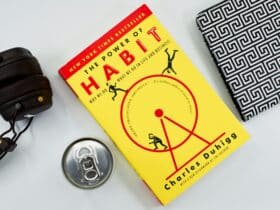Anyone who watched the opening ceremonies on Friday night would have been blown away by the absolute detail that went into planning for the Olympics in Beijing. The concept, the design of the stadiums, the incredibly elaborate opening ceremony… all were flawless and beautiful beyond words.

The opening ceremony on Friday night was one of the most incredible aspects of the Olympics to date. The show featured a staggering 22,000 participants, 15,000 costumes and 43,000 fireworks. China commissioned renown film director Zhang Yimou to tackle the monstrous task of coordinating the huge performance. And Yimou didn’t disappoint. The show was absolutely breathtaking, intertwined with intricate choreography and cutting-edge technology.
1. Step outside your comfort zone
Zhang Yimou was, admittedly, outside of his comfort zone. He was quoted as saying that doing a performance like the opening ceremony was “100 times harder” than his usual task of directing a movie. Sometimes not having someone qualified for the job can yield creative, interesting results. Yimou created an unbelievable show because he took a step outside of his comfort zone and created a show with 22,000 actors and no cut takes, digital effects or stunt doubles. Just good old fashioned theatre, at the highest level.
2. Hard work
Pulling off a feat like using 22,000 performers takes many, many hours of practice. Some performers started practicing 13 months in advance, and the first mass rehearsal with all performers was in March. In order to have a flawless performance, ample practice time was crucial. Yet what makes their practice time more impressive is the fact that the building wasn’t ready to be practiced in until a couple of months before the opening night.
3. Always strive for better (from yourself)
Zhang Yimou was asked in an interview what he thought of the performance.
I regret many things, many details of this performance, many things that I could have done better… For example, there are performers who were injured. I blame myself for that. It might well have been avoided if I had given more detailed instructions
It’s a certainty that many things went wrong during the performance (though the general viewer would never notice it), but Yimou didn’t point out anyone’s mistakes, except for his own.
4. Do your homework
Yimou made it clear that preparing for an event as large as the opening ceremony couldn’t have been done without researching other events. Instead of just diving into planning the event, Yimou and company researched the bejeezus out of other similar events, like the Athens Olympics in 2004.
Looking at other’s work is a way to inspiring. By researching aspects of other large-scale performances, Yimou gathered inspiration and knowledge about the technical side of large performances.
5. Work around Obstacles
When it comes to projects, obstacles are going to be inevitable. Murhpy’s Law kicks in, and it seems that inevitably, something will go wrong. Yet Yimou knew this would happen.
“We had many difficulties. I do not like complaining, but sometimes there are obstacles you can not overcome, that you and your team have to face. What everyone cares about is the final result. We all know this, so we don’t explain.”
Instead of moaning about the obstacles There are a million reasons why an idea won’t work. Acknowledging this upfront allows you to focus on finding ways to make the idea work.
When planning a 5-location, 43,000 rocket fireworks show, it’s important that mother nature cooperated with the celebration. However, instead of leaving the weather to chance, Beijing city officials fired 1,100 “rain rockets” (laced with silver iodide to break the convective clouds) to help keep the rain at bay. By the time the opening ceremony rolled around, the sky was crystal clear.
6. Think big. REALLY big.
Yimou used some of the most advanced technology ever to create the opening ceremony spectacle. When pressed, Yimou believed that London couldn’t best Beijing’s multimedia feats in 2012, in such a short time period. Here are some examples of the enormous vision that Yimou had for China.
- A gi-normous 147 meter by 22 meter LED screen. The display is one of the largest in the world. It used approximately 44,000 colored LED beads.
- The giant, 9 ring globe that the performers performed acrobatic dancing and running around that emerged from the center of the floor.
- A coordinated fireworks show around the entire city of Beijing, with locations spread around five different locations.
7. The Details Pay Off
Probably the most amazing aspect of the entire show was the amount of detail that went into everything. Aside from elaborate costumes, giant technological feats and detailed dance routines, Yimou paid special attention to the details. A 55-second firework sequence of the Beijing sky took nearly a year to figure out.
As the ceremony was getting ready to kick off, giant footprints made of fireworks walked across the Beijing sky above Tiananmen Square towards the National Stadium. However, the sky wasn’t really lined with fireworks. It was a computer generated graphic, placed perfectly into the coverage at the perfect moment. Gao Xiaolong, head of the visual effects team, elaborated on the amount of detail that went into the sequence.
Meticulous efforts were made to ensure the sequence was as unnoticeable as possible: they sought advice from the Beijing meteorological office as to how to recreate the hazy effects of Beijing’s smog at night, and inserted a slight camera shake effect to simulate the idea that it was filmed from a helicopter.
The detail that was put into the sequence paid off: viewers watching had hardly any idea that the footprints were a fake, achieving the goal of the video.


















